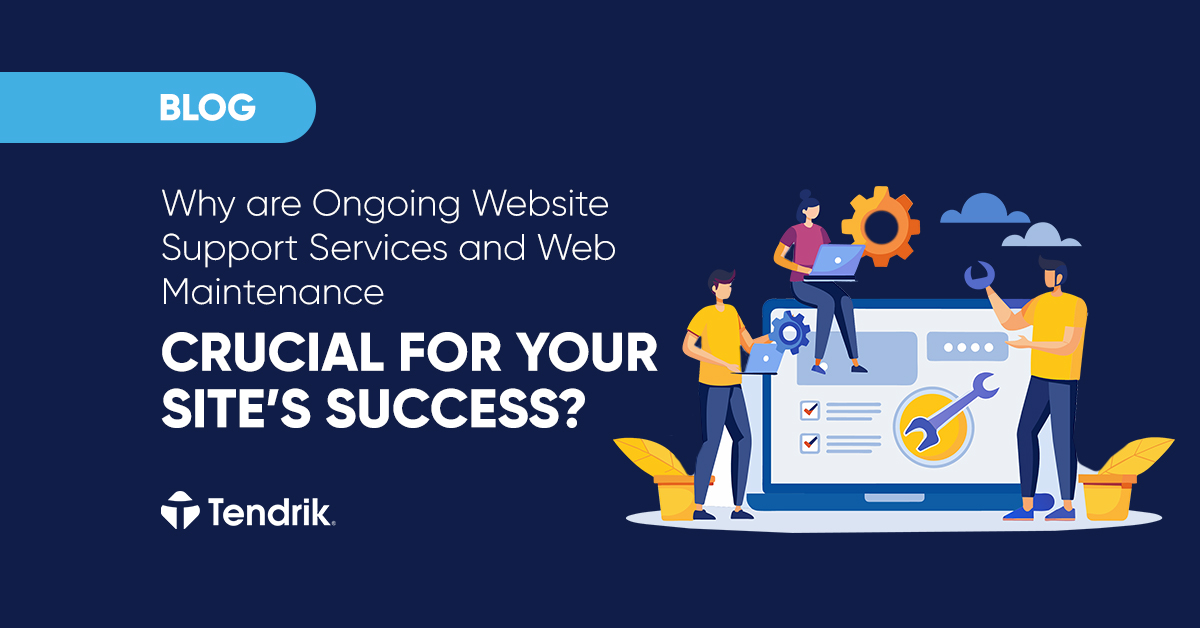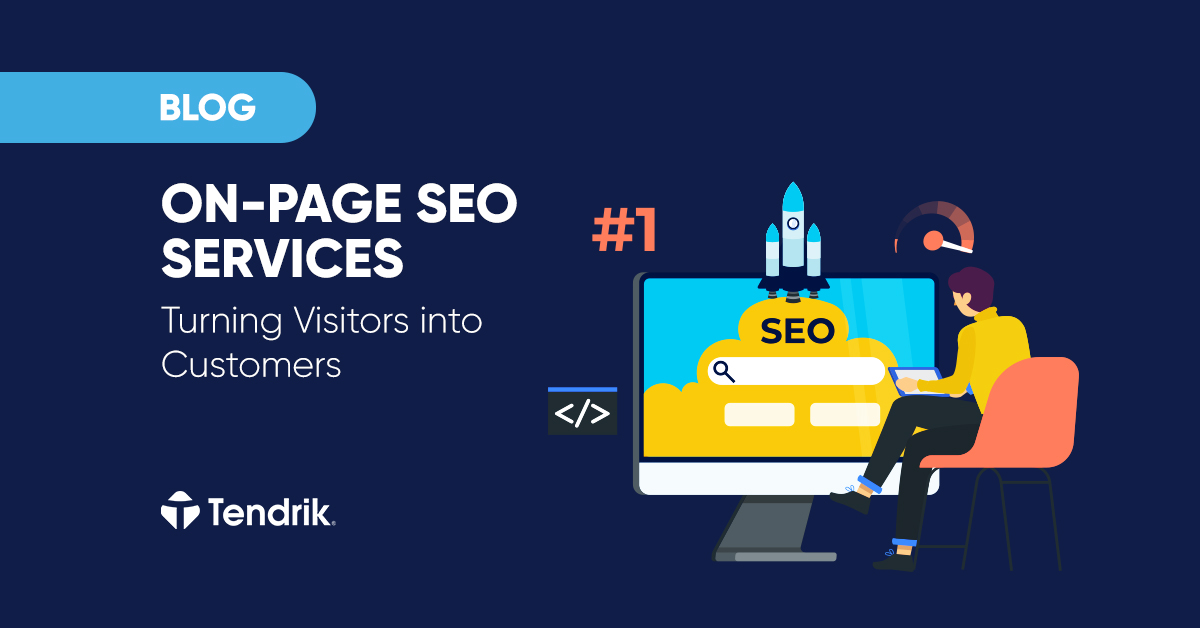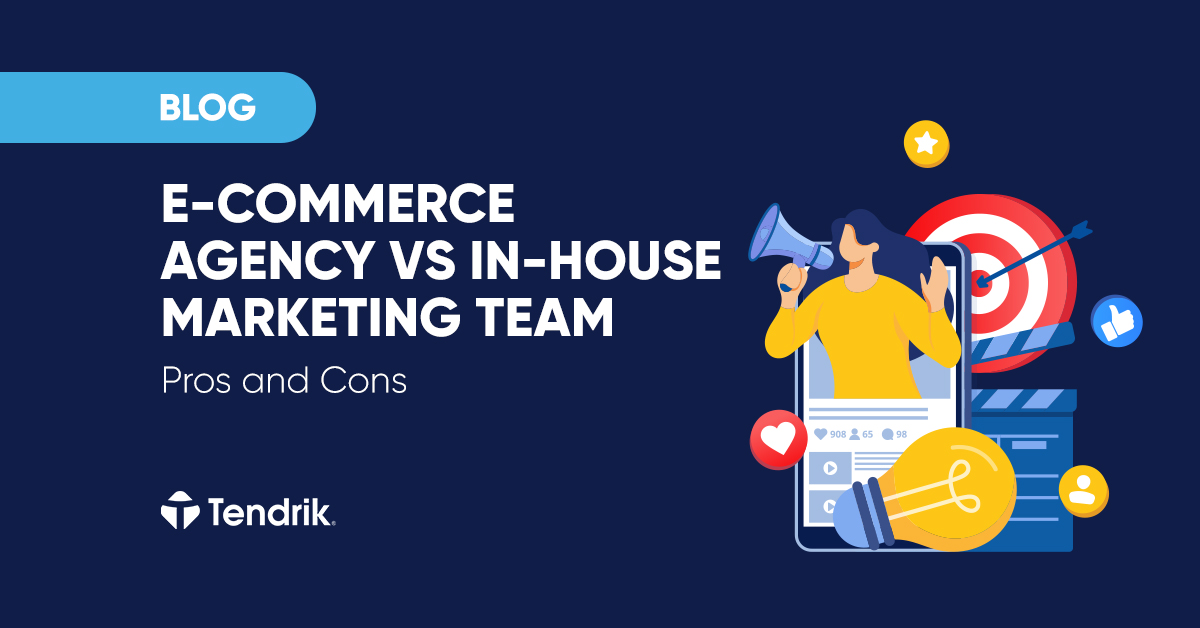Every business with a digital presence understands the value of having a professional, well-designed website. However, many fail to recognize that launching a site is not the end – it’s just the beginning. Without consistent updates, performance monitoring, and proactive problem-solving, even the best-designed site will degrade over time. That’s why ongoing web support services are more than just a technical backup – they’re a core part of your business strategy.
Whether you’re a small business owner trying to build credibility, a startup founder managing limited resources, or a marketer looking to improve SEO (Search engine optimization) and conversions, website support plays a critical role in your site’s success.
This blog post explores the full scope of web support and maintenance, showing how it protects your website, enhances user experience, and supports your digital marketing efforts – all while keeping your brand visible, fast, and secure.
What Does Web Support Include?
Technical support of a website isn’t simply about having someone available when your site goes down. It’s a complex service that combines technical upkeep, security, performance optimization, and user experience enhancements. A comprehensive web support service includes numerous behind-the-scenes tasks that are essential for keeping your website functional and relevant.
Core Maintenance Tasks That Power Your Site
Every modern site, whether it’s a new website or an improved one, runs on a stack of software, including a CMS (like WordPress, Joomla, or Drupal), plugins, themes, and integrations. These components must be regularly updated to maintain functionality and avoid security vulnerabilities. Skipping updates, even for a few months, can result in compatibility issues or exposure to hackers exploiting known flaws.
Alongside software updates, regular backups are a must-have safety net. A reliable tech support will schedule automated backups – daily, weekly, or in real time – so if your website crashes due to a failed update, attack, or accidental deletion, it can be fully restored in minutes. This level of preparedness is especially critical for e-commerce stores and lead-generation websites where uptime directly impacts revenue.
Key ongoing maintenance services include:
- CMS and plugin updates;
- Theme compatibility testing;
- Daily or weekly backups;
- SSL certificate renewals;
- Server uptime and speed monitoring.
These preventative tasks form the backbone of your website’s stability.
Support Services That Keep Your Website Secure and Optimized
While maintenance keeps your site current, support addresses what happens when something goes wrong or needs improvement. A strong support team ensures your site is always functional, secure, and aligned with your goals.
Support services often involve server monitoring, load testing, and real-time alerts to detect issues before they impact users. If a plugin breaks a layout or a mobile menu stops working after an update, support professionals resolve these issues immediately, often before you or your customers notice.
Additionally, many providers offer help with content changes, minor design tweaks, and even consultation sessions to align your site with current marketing objectives or seasonal promotions.
Think of the support of your website as your behind-the-scenes partner that helps:
- Keep your website running smoothly 24/7;
- Monitor and fix emerging bugs or compatibility issues;
- Offer quick turnarounds on urgent requests;
- Optimize site performance in response to user feedback;
- Support your team with platform-specific guidance.
Rather than being reactive, modern support is proactive and strategic. It helps ensure that your website doesn’t just exist – it performs at its best, all the time.
How Website Maintenance Services Keep Your Site Running Smoothly?
Imagine running a physical store and ignoring leaky ceilings, broken lights, or doors that won’t open. Customers wouldn’t feel safe or comfortable. The same applies online. Your website is your digital storefront, and it needs to be fully operational 24/7. Without routine website maintenance, your digital property can become outdated, slow, or even unusable.
Regular maintenance ensures that everything under the hood of your website continues to function as intended. This includes front-end elements like sliders, forms, and navigation bars, as well as backend systems that affect speed, server communication, and security.
For example, caching plugins might break after a major CMS update, or a browser compatibility issue might cause your checkout page to fail on Safari or Chrome. These problems, if not noticed, can result in poor customer experience and lost revenue. Through continuous monitoring and performance testing, support professionals can fix these issues before they affect real users.
Maintenance also includes reviewing file sizes, compressing media, removing broken links, and optimizing databases. These enhancements improve loading speed, reduce bounce rates, and enhance SEO. It’s about ensuring that your site doesn’t just work – it works seamlessly.
Why Do WordPress Sites Need Regular Web Support?
WordPress is an incredible CMS platform – flexible, scalable, and widely supported. But its strength is also its weakness. Because it’s open-source and plugin-based, WordPress websites are often a patchwork of third-party tools. Each of these introduces potential points of failure or conflict, which is why WordPress support must be ongoing.
Many business owners assume that installing updates manually every few months is sufficient. But that’s risky. A plugin might not be compatible with the latest WordPress version, causing unexpected downtime. Similarly, outdated themes can lead to broken layouts or functional errors, especially on mobile devices.
Worse, WordPress is a primary target for cyberattacks. Hackers often exploit known vulnerabilities in outdated plugins or themes. Web support teams provide firewall implementation, malware scanning, and real-time security monitoring – essential layers of protection for any business handling customer data.
Moreover, specialized support includes WordPress staging environments to test updates before going live, preventing critical errors from affecting your users. You get not only safety but also peace of mind that your site won’t break after an update.
What Happens If You Skip Website Support and Maintenance?
Let’s be blunt: skipping website support and maintenance is a gamble – and not a smart one. Many businesses delay updates or ignore performance issues to save money in the short term, only to pay much more later due to security breaches, SEO penalties, or total site failure.
For instance, if your site gets hacked due to an outdated plugin, the cost of recovery could include front- and back-end web development hours, lost revenue, brand damage, and even legal penalties if customer data is compromised. Add to that the SEO fallout – Google might flag your site as dangerous or remove it from search rankings altogether.
Even without hacking, a neglected website becomes a technical liability. You may face slower page loads, mobile display issues, or contact forms that stop working. Users will quickly leave a broken site, and high bounce rates signal poor quality to search engines, hurting your visibility.
So the real cost isn’t the support plan – it’s what happens without it.
How Web Support Services Boost SEO & Conversions?

Most people think of SEO as keywords and backlinks. While those are essential, technical optimization – the performance and infrastructure of your site – is equally important. Google’s ranking algorithm factors in loading speed, responsive mobile version, uptime, and overall user experience.
Regular support ensures that your site meets these technical standards. Optimizing image sizes, reducing server response time, improving navigation, and fixing crawl errors all contribute to better rankings.
But SEO is just one side of the coin. The other is conversion optimization. If your site is fast, error-free, and user-friendly, users are more likely to complete the desired actions – sign up, call, buy, or download.
In other words, web support doesn’t just keep the lights on – it directly improves your bottom line.
How Support Services Improve Web Design and UX
Good website design isn’t just about aesthetics – it’s about how users interact with your site. A clean layout is useless if buttons don’t work, text overlaps, or your site doesn’t scale properly on tablets. Ongoing support bridges this gap between beautiful design and functional execution.
User experience (UX) is at the core of modern web success. Today’s visitors expect fast, frictionless experiences. If your page takes more than three seconds to load, you’ll likely lose more than 50% of your visitors. Web professionals conduct UX audits, heatmap analysis, and accessibility reviews to identify weak points in your design.
Whether it’s repositioning a CTA for better visibility, optimizing for voice search, or improving form validation, your support provider ensures that your web design stays aligned with best practices and current user behaviors. This not only improves satisfaction but also enhances your online reputation.
Should You Choose a Website Maintenance Plan or Pay-As-You-Go?

When evaluating web support options, many businesses consider pay-as-you-go support attractive due to its apparent flexibility. However, this model often leads to higher costs and slower response times, especially during emergencies.
A website maintenance plan, on the other hand, ensures you’re covered consistently. You get scheduled updates, ongoing monitoring, and faster turnarounds because your service provider already understands your site’s infrastructure. There’s no onboarding time every time something breaks.
Maintenance plans may also include added perks such as priority support, free consultation sessions, or discounted rates on redesigns and feature development. You can also budget more accurately, which is crucial for startups and small businesses.
What Maintenance Services Include for E-commerce Sites?
If you operate an e-commerce store, your website is your business. Any glitch – a non-functional cart, a misconfigured payment gateway, or a broken product filter – directly impacts your revenue.
Ecommerce support includes real-time monitoring, automated testing of transactional flows, and performance tuning during high-traffic periods like Black Friday or seasonal promotions. Teams also help implement security patches, optimize product databases, and support third-party tools like Google Ads or shipping APIs.
For e-commerce, website maintenance services are not optional. They’re a foundational requirement to ensure your store is always available, fast, and trusted by customers.
How to Choose the Best Website Support Services for Your Business?
Choosing the right web service provider can be the difference between consistent performance and constant frustration. Look for a digital agency with a strong track record, transparent pricing, and a wide range of professional services.
Ideally, your provider should offer both maintenance and support, understand your platform (like WordPress or Shopify), and be available for emergency requests. Also, check for client reviews, case studies, and examples of similar businesses they’ve helped.
A full-service digital marketing agency as Tendrik, with years of experience, can also help if you need support beyond just tech, such as SEO, content, or UX consulting. Contact us today to find out together how our web support services can help your business grow with confidence. Let’s take care of your website, so you can focus on running your business.
Is Web Support Worth It?
- Yes, because your website is a living, evolving business asset.
- Yes, because prevention is cheaper than emergency recovery.
- Yes, because performance, security, and UX are non-negotiable.
Don’t leave your digital storefront unprotected. Invest in ongoing website support and maintenance – and make sure your website isn’t just surviving, but thriving.







